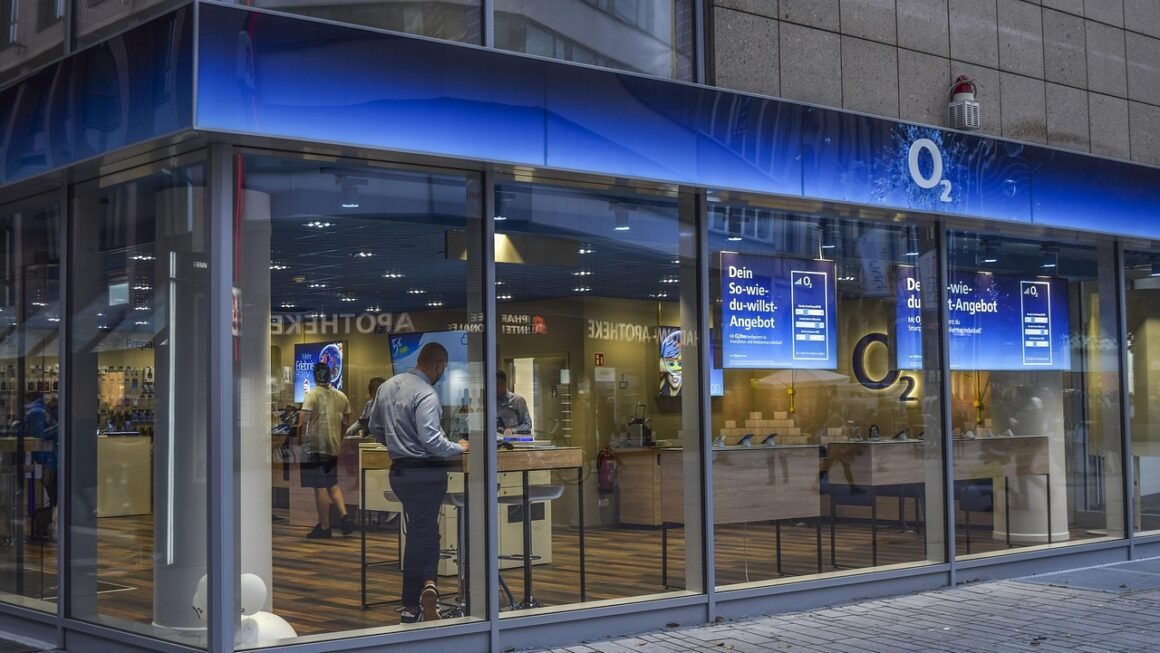The internet is everywhere, accessed on devices of all shapes and sizes, from massive desktop monitors to tiny smartwatches. Reaching your audience effectively means ensuring your website looks and functions flawlessly, regardless of the device they’re using. That’s where responsive layout comes in, offering a dynamic approach to web design that adapts to the user’s screen. This blog post will explore the intricacies of responsive layout, its benefits, and how you can implement it to create a seamless user experience.
Understanding Responsive Layout
What is Responsive Layout?
Responsive layout is a web design approach that makes web pages render well on a variety of devices and window or screen sizes. Instead of creating separate websites for different devices (e.g., a mobile version and a desktop version), a single responsive website adapts its layout and content based on the screen size and orientation of the device accessing it. This is achieved through a combination of flexible grids, flexible images, and media queries.
Why is Responsive Layout Important?
In today’s mobile-first world, responsive layout is no longer optional; it’s essential. Consider these factors:
- Mobile Usage is Dominant: According to Statista, mobile devices account for approximately 59% of global web traffic. Ignoring mobile users means missing out on a significant portion of your potential audience.
- Improved User Experience: A responsive website ensures a consistent and positive user experience across all devices, leading to higher engagement and conversion rates.
- SEO Benefits: Google prioritizes mobile-friendly websites in its search rankings. A responsive website improves your SEO performance, making your site more visible to search engines and users.
- Cost-Effectiveness: Maintaining a single responsive website is generally more cost-effective than managing separate desktop and mobile versions.
- Future-Proofing: As new devices with varying screen sizes emerge, a responsive layout will continue to adapt, ensuring your website remains accessible and user-friendly.
Key Components of Responsive Layout
Responsive layout relies on three fundamental components:
- Flexible Grid: Instead of using fixed pixel widths, a flexible grid uses relative units like percentages or fractions (fr) to define the size and position of elements. This allows elements to scale proportionally based on the screen size.
- Flexible Images: Images are scaled to fit their container elements, preventing them from overflowing and disrupting the layout. The `max-width: 100%;` CSS property is commonly used for this purpose.
- Media Queries: Media queries are CSS rules that apply different styles based on the characteristics of the device, such as screen width, height, orientation, and resolution. This allows you to customize the layout and appearance of your website for different devices.
Implementing Responsive Layout
Setting the Viewport
The viewport meta tag is essential for telling the browser how to scale the webpage to fit the device’s screen. It should be included in the “ section of your HTML document:
“`html
“`
- `width=device-width`: Sets the width of the viewport to the width of the device’s screen.
- `initial-scale=1.0`: Sets the initial zoom level when the page is first loaded.
Using Flexible Grids
Instead of fixed pixel values, use percentages or fractions (fr) to define the width of your layout elements. CSS Grid and Flexbox are powerful tools for creating flexible grids:
- Example using CSS Grid:
“`css
.container {
display: grid;
grid-template-columns: repeat(auto-fit, minmax(250px, 1fr));
grid-gap: 20px;
}
“`
This example creates a grid container with columns that automatically adjust to fit the screen size. Each column will be at least 250px wide and will fill the available space equally.
- Example using Flexbox:
“`css
.container {
display: flex;
flex-wrap: wrap;
justify-content: space-between;
}
.item {
width: calc(50% – 10px); / Each item takes up 50% of the container width, minus some gap /
}
@media (max-width: 768px) {
.item {
width: 100%; / On smaller screens, each item takes up the full width /
}
}
“`
This example uses flexbox to arrange items in rows, wrapping them to the next line when they exceed the container width. A media query ensures that on smaller screens, each item takes up the full width.
Applying Media Queries
Media queries allow you to apply different styles based on the screen size and other device characteristics. They are defined using the `@media` rule in CSS:
“`css
/ Styles for screens smaller than 768px /
@media (max-width: 768px) {
body {
font-size: 14px;
}
.navigation {
display: none; / Hide the navigation on smaller screens /
}
.mobile-navigation {
display: block; / Show the mobile navigation /
}
}
/ Styles for screens larger than 768px and smaller than 1200px /
@media (min-width: 768px) and (max-width: 1200px) {
body {
font-size: 16px;
}
}
/ Styles for screens larger than 1200px /
@media (min-width: 1200px) {
body {
font-size: 18px;
}
}
“`
This example demonstrates how to use media queries to adjust the font size and navigation based on the screen size.
Best Practices for Responsive Layout
Prioritize Mobile-First Design
Start by designing the layout for mobile devices first, then progressively enhance it for larger screens. This approach ensures that the core content and functionality are accessible on all devices and promotes a simpler, more focused design.
Optimize Images
Large images can significantly slow down page load times, especially on mobile devices. Optimize images by:
- Compressing images: Use tools like TinyPNG or ImageOptim to reduce image file sizes without sacrificing quality.
- Using responsive images: Use the “ element or the `srcset` attribute of the `
` element to serve different image sizes based on the screen size and resolution.
- Using modern image formats: Consider using WebP format, which offers superior compression and quality compared to JPEG and PNG.
Test on Multiple Devices and Browsers
Thoroughly test your responsive website on a variety of devices and browsers to ensure that it looks and functions correctly. Use browser developer tools or online testing platforms like BrowserStack or LambdaTest to simulate different devices and screen sizes.
Accessibility Considerations
Ensure your responsive design is accessible to all users, including those with disabilities. Consider the following:
- Semantic HTML: Use semantic HTML elements to provide structure and meaning to your content.
- Alternative text for images: Provide descriptive alternative text for all images.
- Keyboard navigation: Ensure that all interactive elements are accessible via keyboard navigation.
- Sufficient color contrast: Ensure that there is sufficient color contrast between text and background colors.
Tools and Frameworks for Responsive Layout
Several tools and frameworks can simplify the process of creating responsive layouts:
- Bootstrap: A popular CSS framework that provides a responsive grid system, pre-built components, and JavaScript plugins.
- Foundation: Another widely used CSS framework that offers a flexible grid system and a variety of customizable components.
- Materialize: A CSS framework based on Google’s Material Design.
- Tailwind CSS: A utility-first CSS framework that allows you to build custom designs by composing small, single-purpose classes.
- CSS Grid and Flexbox: Native CSS layout modules that provide powerful tools for creating flexible and responsive layouts without relying on external frameworks.
Choosing the right tool or framework depends on your project requirements and personal preferences. Frameworks like Bootstrap and Foundation offer a comprehensive set of features and are well-suited for large-scale projects, while utility-first frameworks like Tailwind CSS provide more flexibility and control. CSS Grid and Flexbox are excellent choices for creating custom layouts with minimal overhead.
Conclusion
Responsive layout is an indispensable aspect of modern web development. By understanding its core principles and implementing best practices, you can create websites that deliver a seamless user experience across all devices, improve your SEO performance, and future-proof your web presence. Embrace flexible grids, leverage media queries, and prioritize mobile-first design to ensure your website is accessible, engaging, and effective for all users.



